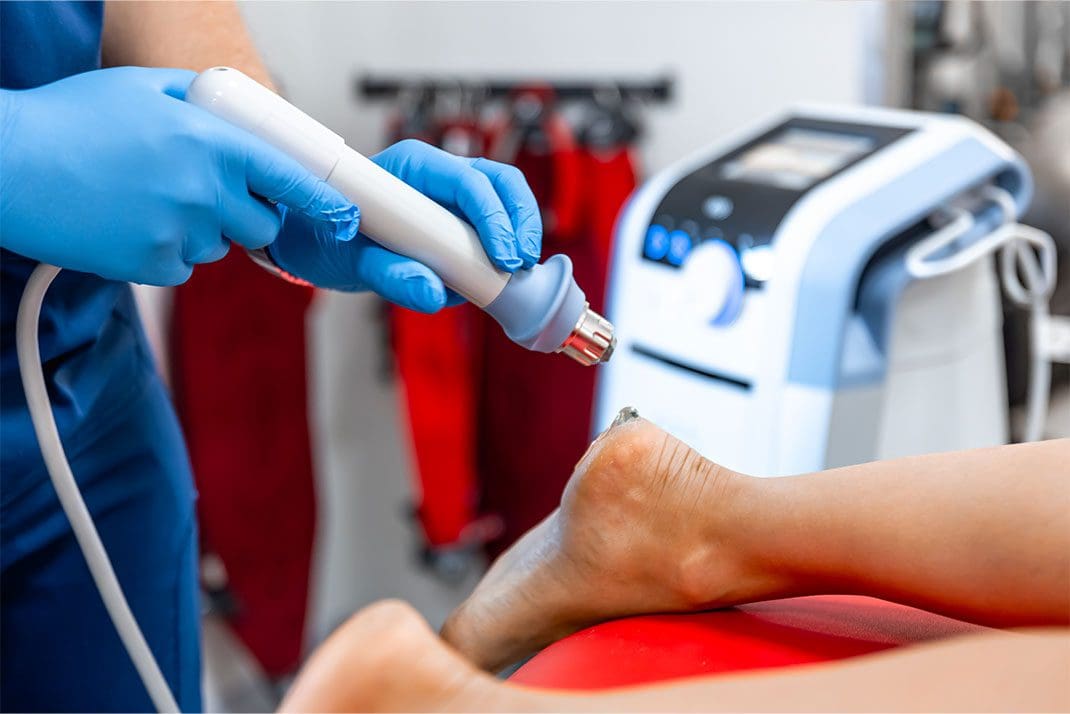Picture this: your alarm goes off, you swing your legs out of bed, and the moment your feet hit the floor – ouch! That stabbing pain in your heel makes you wonder if you’ve stepped on glass. Sound familiar? You’re likely dealing with plantar fasciitis, and trust us, you’re in good company.
Plantar fasciitis is one of those conditions that can sneak up on you. Maybe you started noticing a dull ache after your weekend runs, or perhaps it began after a particularly busy day on your feet at work. Whatever triggered it, this inflammation of the thick band of tissue running along your foot’s bottom can turn simple morning routines into painful ordeals.
The frustrating thing? That tissue – called the plantar fascia – acts like a shock-absorbing bowstring supporting your arch. When it gets overused or strained, tiny tears can develop, leading to inflammation and that characteristic sharp pain that’s worse when you first get up.

Most people start with the classic approaches: stretching those tight calves every morning, rolling a tennis ball under their foot, switching to supportive shoes, or even getting custom orthotics made. Ice packs become your best friend, and you might find yourself avoiding long walks or that dance class you love.
These strategies work well for many people – but what happens when they don’t? What if you’ve been religiously doing your stretches for months, invested in expensive orthotics, and still wake up each morning dreading that first step?
This is where Shockwave Therapy enters the picture. Think of it as a more targeted approach that works differently from traditional treatments.

Here’s the interesting part about Shockwave Therapy – it uses high-energy sound waves (not the kind you hear) directed right at the problem area. These acoustic waves create controlled micro-trauma in your tissues, which might sound counterintuitive, but bear with us.
Your body responds to this controlled stimulation in several ways that could help with healing:
Getting Your Blood Flowing: The treatment appears to kick your circulation into higher gear in the treated area. More blood flow means more nutrients and oxygen reaching those stubborn, damaged tissues. It’s like upgrading from a trickle to a steady stream of healing resources.
Waking Up Sleepy Cells: Those acoustic waves seem to give your cells a gentle nudge, encouraging them to get back to work on repairs. Think of it as hitting the refresh button on your body’s natural healing processes.
Tackling Stubborn Inflammation: Chronic inflammation can be like that house guest who overstays their welcome – it hangs around long after it’s useful. Shockwave Therapy may help convince that inflammation to finally pack up and leave.
Changing Your Pain Game: Here’s something interesting – the treatment might actually change how your nerves process pain signals. Some patients describe it as turning down the volume on their pain, though everyone’s experience is different.
Walking into a Shockwave Therapy session isn’t like heading into surgery. You’ll sit comfortably while a trained professional applies a handheld device to your heel area. The whole thing takes about 15-20 minutes – shorter than most TV show episodes.
Most people need several sessions spread over a few weeks. You might feel some discomfort during treatment (think firm pressure rather than sharp pain), but you can literally walk out afterward and get on with your day. No crutches, no time off work, no dramatic lifestyle changes required.
Let’s be honest – Shockwave Therapy isn’t magic. Some people notice improvements within a few weeks, while others take longer to see changes. A few might find it doesn’t work for their particular situation at all. Bodies are wonderfully complex, and they don’t all respond identically to any treatment.
What we do know is that many patients who’ve tried everything else find this approach gives them the breakthrough they’ve been looking for. It’s particularly worth considering if you’ve been dealing with heel pain for months, traditional treatments haven’t provided lasting relief, and you’re not ready to consider surgical options.
Shockwave Therapy might be worth discussing with your podiatrist if you’re tired of managing your pain rather than addressing it. It’s especially relevant if your heel pain is affecting your sleep, limiting your activities, or just generally making life less enjoyable than it should be.
The key is having a proper assessment first. Your podiatrist can evaluate whether your specific type of heel pain is likely to respond to this treatment and help you weigh the potential benefits against any limitations.
Don’t let persistent heel pain become your new normal. Whether Shockwave Therapy or another treatment approach is right for you, the first step is getting professional guidance tailored to your unique situation.
Remember, every person’s experience with heel pain is different. Speaking with a qualified podiatrist about your symptoms and treatment options is the best way to develop an effective plan for your specific needs.
About AC Podiatry: We’re here to help you get back on your feet comfortably. Located in South Australia, we offer comprehensive foot and ankle care. Contact us at 8255-5575 or visit www.acpodiatry.com.au to learn more about your options.